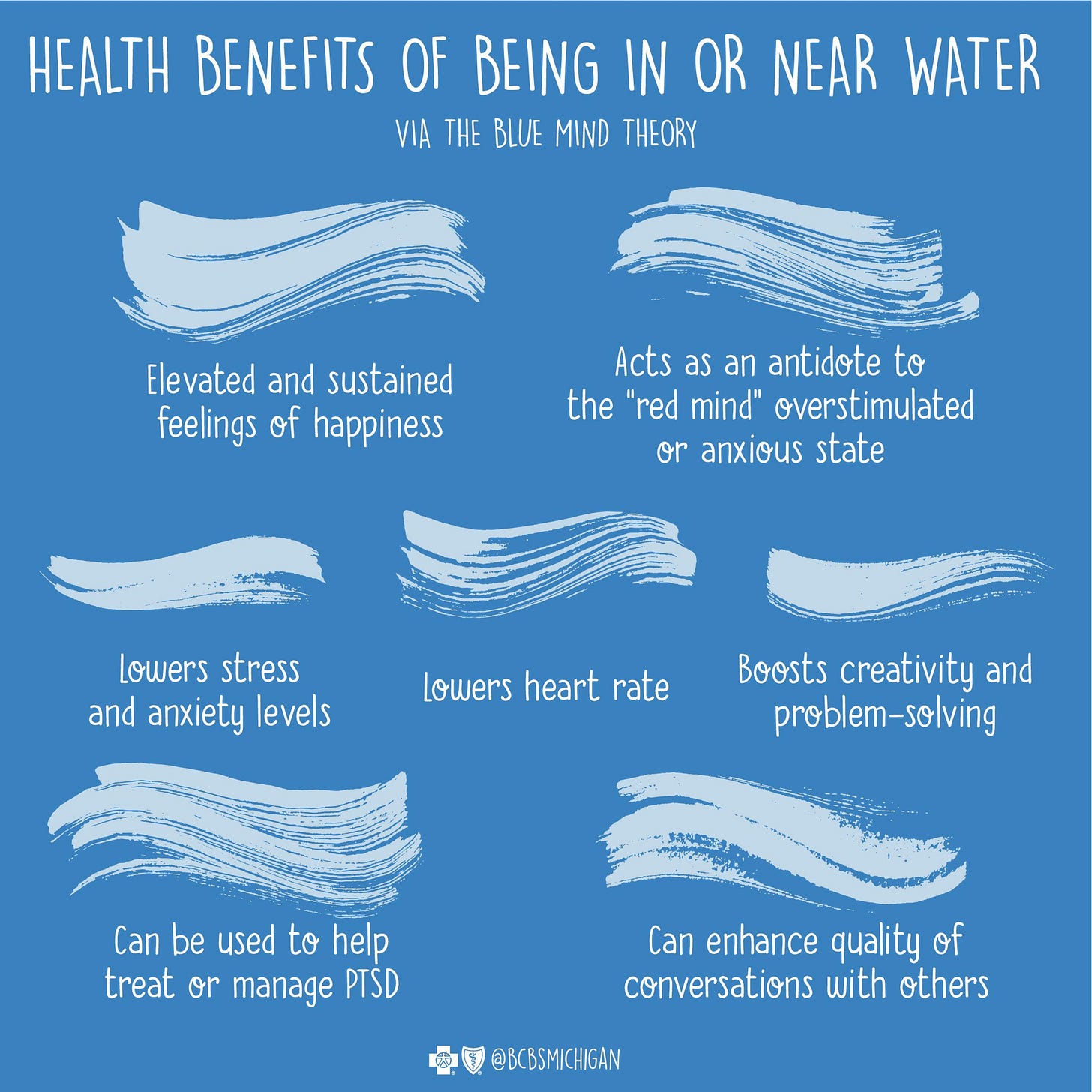You Should Get Wet
Blue Mind Theory
Blue Mind Theory:
The relaxed and often meditative state that people fall into when they are near, in, under, or looking at water. It was popularised by Wallace J. Nichols, author of the national bestselling book, Blue Mind.
Water has a positive effect on both the mind and the body:
⬆️ Dopamine — The ‘feel good’ hormone
⬆️ Serotonin — The ‘happy’ hormone
⬆️ Oxytocin — The ‘love’ hormone
⬇️ Cortisol — The ‘stress’ hormone
The colour, sound, and feel of water can also have other physical effects.
The funny thing is, you don’t even need to be in or even near the water to feel these effects.
One study showed that simply looking at an aquarium for 10 minutes can significantly lower your heart rate and blood pressure.
These effects add up to a happier, healthier, more relaxed state that often feels a bit like meditation — which is one of the reasons sunbathing at the beach feels so good.
But it’s not only relaxing — water also aids creativity.
The vast open sea inspires big-picture thinking while the stillness of a pool creates the calm that allows your mind to think clearly.
Here’s a nice visual I found online that helps illustrate these ideas:
Thanks for reading this slightly shorter than usual article.
I hope you enjoyed it all the same.
If you haven’t already, feel free to subscribe to never miss any of my new posts as I share a new mental model every week.
If you have already subscribed, consider upgrading to get access to all of my upcoming illustrated book summaries!





I came across this a while back—spending 20+ minutes near water has a calming effect on the mind.
My theory:
Major civilizations have always thrived near water sources, so our brains may be wired to associate water with safety, abundance, and well-being.
I love the water and always have. There's just something so soothing about the sound of ocean waves. 🌊